Computer Science for the Working Category Theorist Noson S.
Visit to download the full and correct content document: https://ebookmeta.com/product/theoretical-computer-science-for-the-working-categor y-theorist-noson-s-yanofsky/
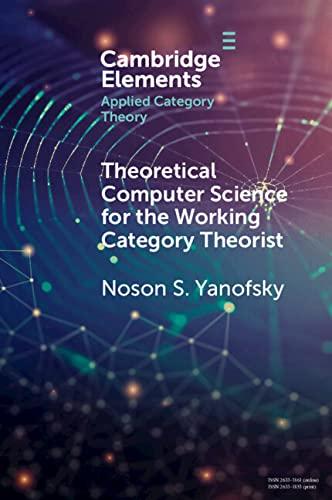
More products digital (pdf, epub, mobi) instant download maybe you interests ...
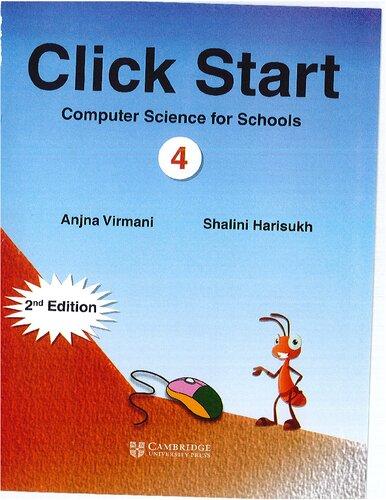
Click Start Level 4 Student s Book Computer Science for Schools CBSE Computer Science Anjna Virmani
https://ebookmeta.com/product/click-start-level-4-student-s-bookcomputer-science-for-schools-cbse-computer-science-anjna-virmani/
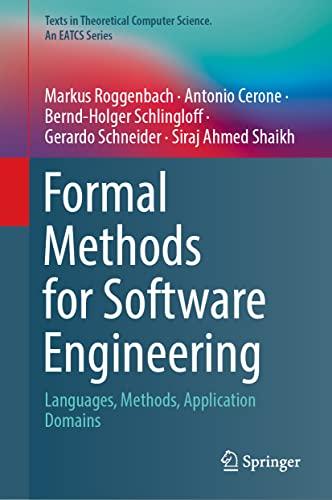
Formal Methods for Software Engineering: Languages, Methods, Application Domains (Texts in Theoretical Computer Science. An EATCS Series) Markus Roggenbach
https://ebookmeta.com/product/formal-methods-for-softwareengineering-languages-methods-application-domains-texts-intheoretical-computer-science-an-eatcs-series-markus-roggenbach/

The Self Taught Computer Scientist The Beginner s Guide to Computer Science 1st Edition Althoff
https://ebookmeta.com/product/the-self-taught-computer-scientistthe-beginner-s-guide-to-computer-science-1st-edition-althoff/
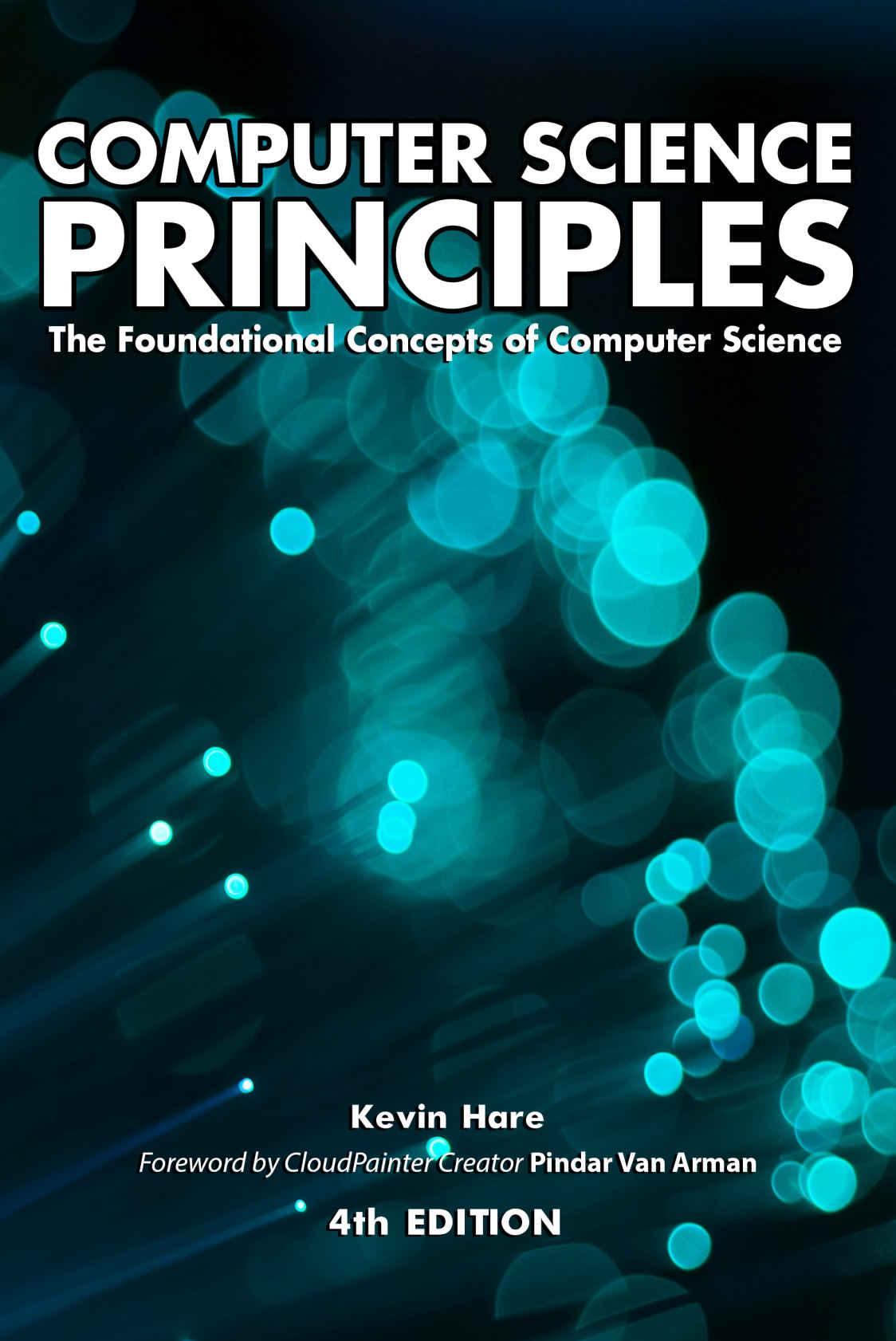
Computer Science Principles The Foundational Concepts of Computer Science Kevin Hare
https://ebookmeta.com/product/computer-science-principles-thefoundational-concepts-of-computer-science-kevin-hare/
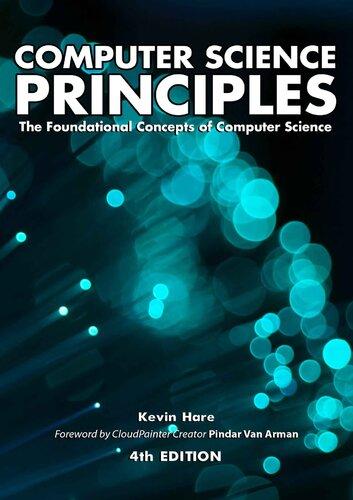
Computer Science Principles : The Foundational Concepts of Computer Science 4th Edition Kevin Hare
https://ebookmeta.com/product/computer-science-principles-thefoundational-concepts-of-computer-science-4th-edition-kevin-hare/
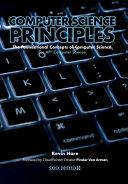
Computer Science Principles: The Foundational Concepts of Computer Science, 4th Edition Kevin P Hare
https://ebookmeta.com/product/computer-science-principles-thefoundational-concepts-of-computer-science-4th-edition-kevin-phare/
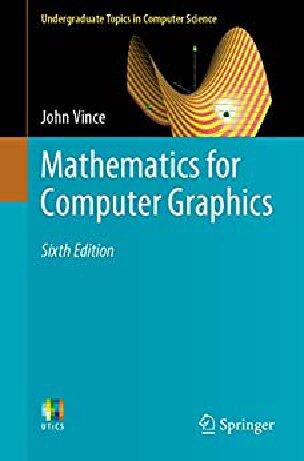
Mathematics for Computer Graphics (Undergraduate Topics in Computer Science), 6th Edition 2022 John Vince
https://ebookmeta.com/product/mathematics-for-computer-graphicsundergraduate-topics-in-computer-science-6th-edition-2022-johnvince/
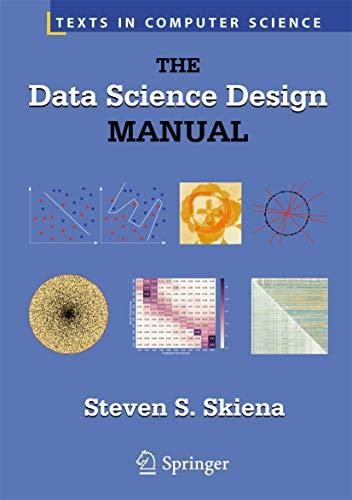
The Data Science Design Manual Texts in Computer Science Skiena
https://ebookmeta.com/product/the-data-science-design-manualtexts-in-computer-science-skiena/
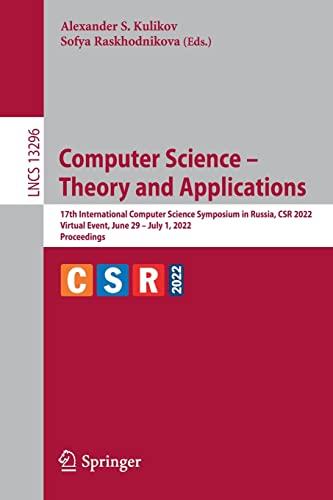
Computer Science Theory and Applications 17th
International Computer Science Symposium in Russia CSR 2022 Virtual Event June 29 July 1 2022 Lecture Notes in Computer Science 13296 Alexander S. Kulikov (Editor)
https://ebookmeta.com/product/computer-science-theory-andapplications-17th-international-computer-science-symposium-inrussia-csr-2022-virtual-event-june-29-july-1-2022-lecture-notes-



UniversityPrintingHouse,CambridgeCB28BS,UnitedKingdom OneLibertyPlaza,20thFloor,NewYork,NY10006,USA
477WilliamstownRoad,PortMelbourne,VIC3207,Australia
314–321,3rdFloor,Plot3,SplendorForum,JasolaDistrictCentre, NewDelhi–110025,India
103PenangRoad,#05–06/07,VisioncrestCommercial,Singapore238467
CambridgeUniversityPressispartoftheUniversityofCambridge. ItfurtherstheUniversity’smissionbydisseminatingknowledgeinthepursuitof education,learning,andresearchatthehighestinternationallevelsofexcellence.
www.cambridge.org Informationonthistitle: www.cambridge.org/9781108792745 DOI: 10.1017/9781108872348
©NosonS.Yanofsky2022
Thispublicationisincopyright.Subjecttostatutoryexception andtotheprovisionsofrelevantcollectivelicensingagreements, noreproductionofanypartmaytakeplacewithoutthewritten permissionofCambridgeUniversityPress.
Firstpublished2022
AcataloguerecordforthispublicationisavailablefromtheBritishLibrary.
ISBN978-1-108-79274-5Paperback
ISSN2633-1861(online)
ISSN2633-1853(print)
CambridgeUniversityPresshasnoresponsibilityforthepersistenceoraccuracyof URLsforexternalorthird-partyinternetwebsitesreferredtointhispublication anddoesnotguaranteethatanycontentonsuchwebsitesis,orwillremain, accurateorappropriate.
TheoreticalComputerSciencefortheWorking CategoryTheorist
ElementsinAppliedCategoryTheory
DOI:10.1017/9781108872348
Firstpublishedonline:January2022
NosonS.Yanofsky
BrooklynCollege,CityUniversityofNewYork
Authorforcorrespondence: NosonS.Yanofsky, noson@sci.brooklyn.cuny.edu
Abstract: Usingbasiccategorytheory(category,functor,natural transformation,etc.),thisElementdescribesallthecentralconceptsand provesthemaintheoremsoftheoreticalcomputerscience.Category theory,whichworkswithfunctions,processes,andstructures,isuniquely qualifiedtopresentthefundamentalresultsoftheoreticalcomputer science.Inthistext,wemeetsomeofthedeepestideasandtheoremsof moderncomputersandmathematics,e.g.,Turingmachines,unsolvable problems,theP=NPquestion,KurtGödel’sincompletenesstheorem, intractableproblems,Turing’sHaltingproblem,andmuchmore.The conceptscomealivewithmanyexamplesandexercises.Thisshorttext coverstheusualmaterialtaughtinayear-longcourse.
Keywords: categorytheory,computationalmodels,computabilitytheory, complexitytheory
MSC2020SubjectClassification: 18AXX,18DXX,18MXX,03BXX,03DXX, 68NXX,68QXX,68RXX
©NosonS.Yanofsky2022
ISBNs:9781108792745(PB),9781108872348(OC) ISSNs:2633-1861(online),2633-1853(print)
Dedicatedtothememory ofmybrother
Eli
ThisworkisdedicatedtothememoryofmybrotherRabbiEliyahuMordechai YanofskyZTL(February19,1964–March12,2018).Hewasabrilliantscholar whospenthisentirelifestudyingJewishtextsandhelpingothers.Elihadawarm personalityandacleverwitthatendearedhimtomany.Hewasaninspiration tohundredsoffriendsandstudents.Asanolderbrother,hewasaparagonof excellence.Heleftbehindparents,awife,siblings,andtenwonderfulchildren. Hislosswasterriblypainful.Heissorelymissed.
Preface
“Unsolvableproblems,”“TheP=NPquestion,”“AlanTuring’sHalting problem,”“KurtGödel’sincompletenesstheorem,”“Intractableproblems,” etc.Thesearejustsomeofthemanybuzzwordsthatonehearsaboutinthe currenttechnologymedia.Theseconceptsareallassociatedwiththeoretical computersciencewhichtouchesonsomeofthedeepestandmostprofoundparts ofcontemporaryscienceandmathematics.Theissuesdiscussedinthiswork emergeinalmosteveryareaofcomputers,theoreticalphysics,andmathematics. Inthisshorttextyouwilllearnthemainideasandtheoremsoftheoretical computerscience.
Whiletherearemanytextbooksabouttheoreticalcomputerscience,this Elementisunique.Itisthefirsttextthattranslatestheideasoftheoretical computerscienceintothebasiclanguageofcategorytheory.Withsomeofthe simpleconceptsofcategorytheoryinhand,thereaderwillbeabletounderstand alltheideasandtheoremsthataretaughtinayear-longcourseoftheoretical computerscience.
Whyisitbettertolearntheoreticalcomputersciencewithcategorytheory?
• Itiseasy!Mostoftheideasandtheoremsoftheoreticalcomputerscienceare consequencesofthecategoricaldefinitions.Oncethecategoriesandfunctors ofthedifferentmodelsofcomputationaresetup,theconceptsoftheoretical computersciencesimplyemerge.Manytheoremsareastraightforward consequenceofcompositionandfunctoriality.
• Itisshort!Thepowerfullanguageofcategorytheoryensuresusthatwhatis usuallytaughtinalargetextbookcanbetaughtinthesefewpages.
• Itgivesyoutherightperspective!Anyonewhohaseverexperiencedany categorytheoryknowsthatitmakesyou“zoomout”andseethingsfroma “bird’s-eyeview.”Ratherthangettingoverwhelmedbyallthelittledetailsso thatyoucannot“seetheforestforthetrees,”categorytheoryletsyouseethe bigpicture.
• Itgetstothecoreoftheissues!Categorytheorydistillstheimportantaspects ofasubjectandleavesonewiththemainstructuresneededtounderstand whatisgoingon.
• Itconnectsbetterwithotherareasofscienceandmath!Categorytheoryhas becomethe linguafranca ofnumerousareasofmathematics,andtheoretical physics(e.g.,BaezandStay,2011;CoeckeandKissinger,2017).Byputting theideasoftheoreticalcomputerscienceinthelanguageofcategorytheory, connectionsaremadetotheseotherareas.
Thereareseveraltextsandpapersforthecomputerscientisttolearncategory
theory(BarrandWells,1999;Walters,1991;Pierce,1991;AspertiandLongo, 1991;Scott,2000;Spivak,2014;Poigné,1992).Oursistotallydifferent.The intendedaudiencehereissomeonewhoalreadyknowsthebasicsofcategory theoryandwhowantstolearntheoreticalcomputerscience.
OnedoesnotneedtobeacategorytheoryexperttoreadthisElement.We donotassumethatthereaderknowsmuchmorethanthenotionofcategory, functor,andequivalence.Anymoreadvancedcategoricalconceptsaretaught in§2or“onthefly”whenneeded.
Organisation
Westartwithaquickintroductiontothemajorthemesoftheoreticalcomputer scienceandexplainwhycategorytheoryisuniquelyqualifiedtodescribethose ideasandtheorems.Thenextsectionisashortteachingaidofsomecategorical structuresthatariseinthetextandthatmightbeunknowntothecategorytheory novice.
Sincewewillbediscussingcomputation,wemustfixourideasanddeal withvarious modelsofcomputation.Whatdowemeanbyacomputation? Theliteratureisfullofsuchmodels.Section 3 classifiesandcategorizesthese variousmodelswhileshowinghowtheyarealllinkedtogether.Withthe definitionsandnotationgivenin§§3.1and3.2,onecansafelymoveontoalmost anyotherpart.
Sections 4 and 5 arethecoreofthework.Section 4 describeswhichfunctions canbecomputedbyacomputer–andmoreimportantly–whichfunctions cannot becomputedbyacomputer.Thisiscalled computabilitytheory.Wegive manyexamplesoffunctionsthatnocomputercanperform.Alongtheway,we meetAlanTuring’sHaltingproblemandKurtGödel’sfamousincompleteness theorem.Wealsodiscussaclassificationandhierarchyofallthefunctionsthat cannotbecomputedbycomputers.
Wegoontodiscuss complexitytheory in§5.Thisiswhereweaskand answerwhatis efficiently computable.Everycomputablefunctiondemandsa certainamountoftimeorspacetocompute.Wediscusshowlongandhow complicatedcertaincomputationsare.Alongthewaywemeetthefamous NP-completeproblemsandtheP=NPquestion.
Section 6 isaboutaspecialtypeofproofthatarisesinmanypartsof theoreticalcomputerscience(andmanyareasofmathematics)calleda diagonal argument.Althoughthediagonalargumentscomeinmanydifferentforms,we showthattheyareallinstancesofasinglesimpletheoremofcategorytheory. AlongthewaywemeetStephenKleene’srecursiontheorem,GeorgCantor’s differentlevelsofinfinity,andJohnvonNeumann’sself-reproducingmachine.
Section 6 summarizeswhatwaslearnedabouttheoreticalcomputerscience fromthecategoricalperspective.Itlistsoffsomecommonthemesthatwere seenthroughoutthetext.Italsohasaguideforreaderswhowishtocontinue withtheirstudies.
Whilecomputabilitytheoryandcomplexitytheoryarethemaintopicstaught inatypicaltheoreticalcomputerscienceclass,therearemanyothertopicsthat areeithertouchedonoraretaughtinmoreadvancedcourses.Asupplementary sectiononthewebpageofthetextisaseriesofshortintroductionsforseveral excitingtopics: Formallanguagetheory, Cryptography, Kolmogorovcomplexity theory,and Algorithms.
Thetexthasmanyexamplesandexercises.Thereaderisstronglyurged toworkoutalltheexercises.Inaddition,theElementissprinkledwithshort “AdvancedTopics”thatpointoutcertainadvancedtheoremsorideas.Wealso directthereadertowheretheycanlearnmoreaboutthesetopics.Manysections endwithideasforapotential“ResearchProject.”
Attheendofeverysection,thereaderisdirectedtoplaceswheretheycan learnmoreaboutthetopicfromsourcesinclassicaltheoreticalcomputerscience andincategorytheory.
Thereare,however,omissionsforreasonsofspace.Wedonotcoverevery partoftheoreticalcomputerscience.Forexample,wewillnotdealwith programsemanticsandverification,analysisofalgorithms,datastructures, andinformationtheory.Whilealltheseareinterestingandcanbetreated withacategoricalperspective,wehaveomittedthesetopicsbecauseofspace considerations.Invariably,evenwithinthetopicsthatwedocover,certain theoremsandideasaremissedorglossedover.
Thisisnotatextbookabouttherelationshipbetweencategorytheoryand computerscience.Overthepasthalfcentury,categorytheoristshavemade tremendousadvancesincomputersciencebyapplyingcategoricalconceptsand constructionstothestructuresandprocessesofcomputation.Theliteraturein thisareaisimmense.Section 7.2 givessometextsandpaperstolookformore inthisdirection.Thistextwillnotpresentalltheseareas.Rather,itisfocused onthetaskathand.Hereweuseanovelpresentationtounderstandtheclassic partsoftheoreticalcomputerscience.
Thistextdoesnotstandalone.Imaintainawebpageforthetextat http://www.sci.brooklyn.cuny.edu/noson/TCStext.html
Thewebpagecontainssupplementarymaterial.Therewillalsobelinks tointerestingbooksandarticlesoncategorytheoryandtheoreticalcomputer science,somesolutionstoexercises,andalistoferrata.Thereaderisencouraged tosendanyandallcorrectionsandsuggestionsto noson@sci.brooklyn.cuny.edu.
1Introduction
Theoreticalcomputersciencestartedbeforelarge-scaleelectroniccomputers actuallyexisted.Inthe1930s,whenengineerswerejustbeginningtowork outtheproblemsofmakingviablecomputers,AlanTuringandotherswere alreadyexploringthelimitsofcomputation.Beforephysicistsandengineers beganstrugglingtocreatequantumcomputers,theoreticalcomputerscientists designedalgorithmsforquantumcomputersanddescribedtheirlimitations. Eventoday,beforethereareanylarge-scalequantumcomputers,theoretical computerscienceisworkingon“post-quantumcryptography.”Theprescient natureofthisfieldisaconsequenceofthefactthatitstudiesonlytheimportant andfoundationalissuesaboutcomputation.Itasksandanswersquestionssuch as“Whatisacomputation?”“Whatiscomputable?”“Whatisefficiently computable?”“Whatisinformation?”“Whatisrandom?”“Whatisan algorithm?”etc.
Forus,thecentralroleofacomputeristocalculatefunctions.Computers inputdataofacertaintype,manipulatethedata,andhaveoutputsofacertain type.Inordertostudycomputationwemustlookatthecollectionofallsuch functions.Wemustalsolookatallmethodsofcomputationandseehowthey describefunctions.Toeverycomputationalmethod,thereisanassociated function.Whatwillbeimportantistostudywhichfunctionsarecomputedbya computationalmethodandwhicharenot.Whichfunctionsareeasilycomputed andwhichfunctionsneedmoreresources?Alltheseissues–andmanymore–willbedealtwithinthesepages.
Categorytheoryisuniquelyqualifiedtopresenttheideasoftheoretical computerscience.Thebasiclanguageofcategorytheorywasformulated bySamuelEilenbergandSaundersMacLaneinthe1940s.Theywantedto classifyandcategorizetopologicalobjectsbyassociatingthemtoalgebraic objects.Todothistheyhadtoformulatealanguagethatwasnotspecifically relatedtotopologyoralgebra.Itneededtobeabstractenoughtodealwith bothtopologicalandalgebraicobjects.Thisiswherecategorytheorygetsits power.Bybeingaboutnothinginparticular,or“generalabstractnonsense,” itisabouteverything.Inthistext,wewillseecategoriescontainingvarious typesoffunctionsanddifferentmodelsofcomputation.Therearethenfunctors comparingthesefunctionsandcomputationalmethods.
Whencategoriesfirststarted,themorphismsinacategorywerethoughtof ashomomorphismsbetweenalgebraicstructuresorcontinuousmapsbetween topologicalspaces.Themorphism f : X − Y mightbeahomomorphism f fromgroup X togroup Y oritmightbeacontinuousmapfromtopologicalspace X totopologicalspace Y .However,astimeprogressed,researchersrealizedthat
theymightlookat f asa process ofgoingfrom X to Y .Analgebraicexampleis when X and Y arevectorspacesand f isalineartransformation,awayofgoing from X to Y .Inlogic, X and Y canbepropositionsand f isawayofshowing thatafterassuming X onecaninfer Y .Orforlogiciansinterestedinproofs, again X and Y werepropositionsand f representedaproof(oraformalwayof showing)thatwith X asanassumption,onecanconcludewith Y .Physicists alsogotintotheaction.Forthem, X and Y werestatesofasystemand f representedadynamicoraprocessofgoingfromonetotheother.Geometers andphysicistsconsidered X and Y tobemanifoldsofacertaintypeand f tobe alargershapewhoseboundarieswere X and Y .Computerscientistsconsider X and Y tobetypesofdataand f isafunctionoracomputationalprocessthat takesinputsoftype X tooutputoftype Y .Inthistext,manyofourcategories willbeofthisform.(SeeBaezandStay,2011,CoeckeandKissinger,2017,for comparisonsofmanydifferenttypesofprocesses.)
Itpaystoreexaminethedefinitionofacategorywiththenotionofamorphism asaprocess.Whentherearetwocomposablemaps,
theircomposition g ◦ f istobethoughtofas sequentialprocessing,i.e.,first performingthe f processandthenperformingthe g process.If X isanyobject, thenthereisanidentityprocess Id X : X − X whichdoesnothingto X .No changeismade.Whenanyprocessiscomposedwiththeidentityprocess,itis essentiallythesameastheoriginalprocess.Whentherearethreecomposable maps,
theassociativity ( h ◦ g )◦ f = h ◦(g ◦ f ) essentiallyfollowsfromthefactthat wearedoingtheseprocessesinorder:first f ,then g ,andfinally h .
Inthe1960s,withthedevelopmentof monoidalcategories,itwasrealizedthat notonlydocategoriescontainstructures,butsometimescategoriesthemselves havestructure.Incertaincasesobjectsandmorphismsofcategoriescanbe “tensored”or“multiplied.”Forexample,given X and X inthecategoryof vectorspaces,onecanformtheirtensorproduct X ⊗ X asanobjectofthe categoryofvectorspaces.Or,if X and X areobjectsinthecategoryofsets, thentheirCartesianproduct, X × X ,isalsoanobjectinthecategoryofsets. Asusualincategorytheory,weareconcernedwithmorphisms.If f : X − Y and f : X − Y aremorphismsthenwecannotonlyform X ⊗ X and Y ⊗ Y
butalso f ⊗ f whichwecanwriteas
f Y ⊗ or X ⊗ X f ⊗ f Y ⊗ Y .
Y
Thisshouldbeconsideredasmodeling parallelprocessing,i.e.,performing the f and f processindependentlyandatthesametime.Acategorywhere onecantensortheobjectsandmorphismsiscalledamonoidalcategory.When the f ⊗ f processisessentiallythesameasthe f ⊗ f process,wecallthe structurea symmetricmonoidalcategory.Mostofthecategorieswewillmeet inthesepageswillbetypesofsymmetricmonoidalcategories.
Letussummarize.Thecategorieswewillusehaveobjectsthataretypes ofdatathatdescribetheinputsandoutputsoffunctionsandprocesses,while themorphismsarethefunctionsortheprocesses.Therewillbetwowaysof composingthemorphisms:(i)regularcompositionwillcorrespondtofunction compositionorsequentialprocessing,and(ii)themonoidalcompositionwill correspondtoparallelprocessingoffunctionsorprocesses.Therewillbe variousfunctorsbetweensuchcategorieswhichtakecomputationalprocedures tofunctionsorothercomputationalprocedures.Wewillaskquestionssuchas: Whenarethesefunctorssurjective?Whatisintheirimage?Whatisnotintheir image?Whenaretheyequivalences?etc.
ThisElementwillnotonlyusethelanguageofcategories,itwillalsousethe mindsetofcategories.Asanyonewhohasstudiedatopicincategorytheory knows,thislanguagehasauniquewayofseeingthings.Ratherthanjumpingin tothenitty-grittydetails,categoristsinsistonsettingupwhattheyaretalking aboutfirst.Theyliketoexaminethelargerpicturebeforegettingintothedetails. Also,categorytheoryhasaknackforgettingtotheessenceofaproblemwhile leavingoutallthedrossthatisrelatedtoasubject.Theoreticalcomputerscience standstogainfromthismindset.
Herearesomeofthetopicsthatwewillmeetinthesepages.Westart offbyconsideringdifferent modelsofcomputation.Theseareformal,virtual machinesthatperformcomputations.Weclassifythemintothreedifferent groupings.Therearemodels,suchas Turingmachines,thatperformsymbol manipulations.Historically,thisisoneofthefirstcomputationalmodels. Therearemodelscalled registermachines thatperformcomputationsthrough manipulatingwholenumbers.Ahand-heldcalculatorisatypeofcomputer thatmanipulatesnumbers.Yetanothercomputationalmodeliscalled circuits andperformsbitmanipulations.Everymoderndigitalelectroniccomputer worksbymanipulatingbits.Andfinally,anotherwayofdescribingcomputation
–whichisnotreallyacomputationalmodel–iswith logicalformulas.For eachofthesetypesofcomputationalmodel,wewilldescribeacategorical structurethatcontainsthemodels.Therearefunctorsfromthecategoriesof modelstothecategoriesoffunctions.Therealsoexistfunctorsbetweenthe categoricalstructuresofmodels.Forexample,ahand-heldcalculatorappears tomanipulatewholenumbers.Infact,whatisreallyhappeningisthatthere isacircuitwhichmanipulatesbitsthatperformsthecalculations.Thisisthe essencebehindafunctorbetweenthecategoricalstructureofregistermachines andthecategoricalstructureofcircuits.
Letuslookattheoreticalcomputersciencefromabroadlyphilosophical perspective.Bythe“syntax”ofafunctionwemeanadescriptionofthefunction suchasaprogramthatimplementsthefunction,acomputerthatrunsthe function,alogicalformulathatcharacterizesthefunction,acircuitthatexecutes thefunction,etc.Bythe“semantics”ofafunctionwemeantherulethatassigns toeveryinputanoutput.Computabilitytheoryandcomplexitytheorystudy therelationshipbetweenthesyntaxandthesemanticsoffunctions.Thereare manyaspectstothisrelationship.Computabilitytheoryaskswhatfunctionsare definedbysyntax,and–moreinterestingly–whatfunctionsare not definedby syntax.Complexitytheoryaskshowcanweclassifyandcharacterizefunctions byexaminingtheirsyntax.
Inacategoricalsetting,therelationshipbetweenthesyntaxandsemantics offunctionsisdescribedbyafunctorfromacategoryofsyntaxtoacategory ofsemantics.Thefunctortakesadescriptionofafunctiontothefunctionit describes.Computabilitytheorythenaskswhatisintheimageofthisfunctor and–moreinterestingly–whatis not intheimageofthefunctor.Complexity theorytriestoclassifyandcharacterizewhatisintheimageofthefunctorby examiningitspreimage.
Letuslookatsomeoftheothertopicswecoveronthesepagesandthe supplement.Diagonalargumentsarerelatedtoself-reference.Abouttwoanda halfthousandyearsago,Epimenides(acantankerousCretanphilosopherwho proclaimedCretansalwayslie)taughtusthatlanguagecantalkaboutitself andisself-referential.Heshowedthatbecauseofthisself-referencethereis acertainlimitationoflanguage(somesentencesaretrueifandonlyifthey arefalse.)Inthelatenineteenthcentury,theGermanmathematicianGeorg Cantorshowedthatsetscanbeself-referentialandBertrandRussellshowed thatonemustrestrictthisabilityorsettheorywillbeinconsistent.Inthe1930s, KurtGödelshowedthatmathematicalstatementscanrefertothemselves(“I amunprovable”)andhencethereisalimitationtothepowerofproofs.We arechieflyinterestedinAlanTuringshowingthatcomputerscanreference themselves(afterall,anoperatingsystemisaprogramdealingwithprograms).
Thisentailsalimitationofcomputers.Diagonalargumentsareusedinsystems withself-referencetofindsomelimitationofthesystem.Wedescribeasimple categoricaltheoremthatmodelsallthesedifferentexamplesofself-reference. Manyresultsoftheoreticalcomputerscienceareshowntobeinstancesofthis theorem.
Formallanguagetheorydealswiththeinterplaybetweenmachinesand languages.Themorecomplicatedamachine,themorecomplicatedisthe languageitunderstands.Withcategories,weactuallydescribeafunctorfrom acategoryofmachinestoacategoryoflanguages.Machinesthatareweaker thanTuringmachinesandtheirassociatedlanguagesareexplored.
Moderncryptographyisaboutusingcomputerstoencryptmessages.While itshouldbecomputationallyeasytoencodethesemessages,onlytheintended receiverofthemessageshouldbeabletodecodewithease.Categorically, wewillusesomeoftheideaswelearnedincomplexitytheorytodiscussa subcategoryofcomputablefunctionscontainingeasilycomputablefunctions. Incontradistinction,someothercomputablefunctionscanbethoughtofas hard.Agoodcryptographicprotocoliswhentheencodinganddecodingare easytocomputeandwherethedecoderishardtofind.Thepowerofcategory theorywillbecomeapparentwhenwemakeasimplecategoricaldefinitionand showthatmostmoderncryptographicprotocolscanbeseenaninstanceofthis definition.
Kolmogorovcomplexitytheoryisconcernedwiththecomplexityofstrings. WeuseTuringmachinestoclassifyhowcomplicatedstringsofcharactersare. Thesectionalsohasadiscussionofthenotionofrandomness.
Algorithmsareatthecoreofcomputerscience.Fromabroadprospective, algorithmsareonthethinlinebetweenthesyntaxandsemanticsofcomputable functions.Thefunctorfromsyntaxtosemanticsfactorsas
Thisviewaffordsusadeeperunderstandingoftherelationshipbetweenprogramming,computerscience,andmathematics.
Thefirstpartof§7isacontinuationofthisIntroduction.Itsummarizeswhat wasdoneinthistextusingtechnicallanguage.Weshowthattherearecertain unifyingthemesandcategoricalstructuresthatmaketheoreticalcomputer sciencemoreunderstandable.Wealsoclosethatsectionwithareader’sguide togoingfurtherwiththeirstudies.
Let’srollupoursleevesandgettowork!
2Aide-MémoireonCategoryTheory
Weassumethebasicsofcategorytheory.Thereaderisexpectedtoknow theconceptofacategory,functor,naturaltransformation,equivalence,limit, etc.Wereviewsomelesswell-knownconceptsofcategorytheory.Anyother requiredcategoricalconstructionswillbereviewedalongtheway.Feelfreeto skipthissectionandreturnasneeded.
2.1SliceCategoriesandCommaCategories
Thesliceandcosliceconstructionsmakethemorphismsofonecategoryinto theobjectsofanothercategory.
Definition2.1. Givenacategory A andanobject a of A,the slicecategory, A/ a ,isacategorywhoseobjectsarepairs ( b, f : b − a ) where b isanobject of A and f isamorphismof A whosecodomainis a .Amorphismof A/ a from ( b, f : b − a ) to ( b , f : b − a ) isamorphism g : b − b of A that makesthefollowingtrianglecommute:
Compositionofmorphismscomesfromthecompositionin A,andtheidentity morphismfortheobject ( b, f : b − a ) isid b .
Example2.2. Someexamplesofaslicecategory:
• Considerthecategory Set.Let bethesetofallrealnumbers.Thecategory Set/ isthecollectionofall -valuedfunctions.
• Letusforeshadowbyshowinganexamplethatwewillseeinourtext.Let Func bethecategorywhoseobjectsaredifferenttypesandwhosemorphisms areallfunctionsbetweentypes.OneofthegiventypesisBoolean, Bool, whichhasthepossiblevaluesof0and1.Then Func/Bool isthecategory whoseobjectsarefunctionsfromanytypeto Bool.Suchfunctionsarecalled decisionproblems andtheywillplayamajorroleinthecomingpages.We alsohaveanotionofamorphismbetweendecisionproblems:
where f and f aredecisionproblemsand g isamorphismfrom f to f . Suchamorphismofdecisionproblemswillbecalleda“reduction.”Themap g isareductionof f to f .Theideabehindareductionisthatifweknow theanswerto f thenwecanalsofindtheanswerto f .Sincethetriangle commutes,tofindtheanswerto f onaninput,simplyevaluatetheinputusing g andthenfindtheanswerusing f .Inotherwords,solving f reducesto solving f .
Exercise2.3. Showthatid a : a − a istheterminalobjectin A/ a .
Exercise2.4. Provethatany f : a − a in A inducesafunctor f∗ : A/ a − A/ a thattakesanyobject g : b − a of A/ a to f ◦ g isin A/ a .
Thedualnotionofaslicecategoryisacoslicecategory:
Definition2.5. Givenacategory A andanobject a of A,the coslicecategory, a /A isacategorywhoseobjectsarepairs ( b, f : a − b) where b isanobject of A and f isamorphismof A withdomain a .Amorphismof a /A from ( b, f : a − b) to ( b , f : a − b ) isamorphism g : b − b of A thatmakes thefollowingtrianglecommute:
Compositionofmorphismscomesfromthecompositionin A,andtheidentity morphismfortheobject ( b, f : b − a ) isid b
Example2.6. Someexamplesofacoslicecategory:
• Considertheoneelementset {∗} .Thecategory {∗}/Set hasobjectsthatare setswithafunctionthatpicksoutadistinguishedelementoftheset.An objectisapair ( S, s0 ) where S isasetand s0 isadistinguishedelementof thatset.Themorphismsfrom ( S, s0 ) to (T , t0 ) aresetfunctionsthatpreserve thedistinguishedelement.Thatis, f : S − T suchthat f ( s0 ) = t0 .Thisis thecategoryofpointedsets.
• Whenwetalkaboutfiniteautomata,wewillgeneralizetheaboveexample.Let FinGraph bethecategoryoffinitegraphsandgraphhomomorphisms.Let 20 bethegraphwithjusttwovertices(named s and t for“source”and“target.”) Then 20 /FinGraph isthecategoryoffinitegraphswithadistinguishedvertex for s andadistinguishedvertexfor t .(Theymightbethesamevertex.)
• Let Prop bethecategoryofpropositionswithatmostonemorphismfrom a to b if a entails b.Let p ∈ Prop beaparticularproposition.Then p/Prop is thecategoryofallpropositionsthatareimpliedby p.
Exercise2.7. Showthatid a : a − a istheinitialobjectin a /A.
Definition2.8. Givenfunctors F : A − C and G : B − C,onecanform the commacategory ( F , G ),sometimeswritten F G .Theobjectsofthis categoryaretriples ( a, f , b) where a isanobjectof A, b isanobjectof B and, f : F ( a ) − G ( b) isamorphismin C.Amorphismfrom ( a, f , b) to ( a , f , b ) in ( F , G ) consistsofapairofmorphisms (g, h ) where g : a − a isin A and h : b − b isin B suchthatthefollowingdiagramcommutes:
Compositionofmorphismscomesfromthefactthatonecommutingsquare ontopofanotherensuresthatthewholediagramcommutes.Theidentity morphismsareobvious.
Example2.9. Someexamplesofcommacategoriesarefamiliaralready.
• If B = 1 and G : 1 − C picksouttheobject c0 and A = C with F = IdC , thenthecommacategory ( F , G ) istheslicecategory C/c0 .
• If A = 1 and F : 1 − C picksouttheobject c0 and B = C with G = IdC , thenthecommacategory ( F , G ) isthecoslicecategory c0 /C.
Inthistext,wewilluseacommacategoryconstructionwith F beinganinclusion functor.Inthiscasethecommacategorywillhaveobjectsofacertaintypeand morphismsfromthesubcategory.Thiswillbeimportantforreductionsofone problemtoanother.
Thereareforgetfulfunctors U1 : ( F , G ) − A and U2 : ( F , G ) − B which aredefinedonobjectsasfollows: U1 takes ( a, f , b) to a and U2 takes ( a, f , b) to b.
Exercise2.10. Showthatifthefollowingtwotrianglesofcategoriesand functorscommute
where C − C isaninclusionfunctor,thenthereisaninclusionfunctor ( F , G ) − ( F , G )
2.2SymmetricMonoidalCategoriesandBicategories
Manyofourcategoriesarecollectionsofprocesseswhere,besidessequentiallycomposingprocesses,wecancomposeprocessesinparallel.Such categoriesareformulatedascategorieswithextrastructure.
Definition2.11. A strictlyassociativemonoidalcategory ora strictmonoidal category isatriple (A, I , ⊗) where A isacategory, I isanobjectin A calleda “unit,”and ⊗ isabifunctor ⊗ : A × A − A calleda“tensor”whichsatisfies thefollowingaxioms:
• ⊗ isstrictlyassociative,i.e.,forallobjects a, b and c in A, ( a ⊗ b)⊗ c = a ⊗( b ⊗ c ), and
• I actslikeaunit,i.e.,forallobjects a in A, a ⊗ I = a = I ⊗ a .
Example2.12. Anymonoid(including ,thenaturalnumbers)canbethought ofasastrictlyassociativemonoidalcategory.Theelementsofthemonoid formadiscretecategoryandtheunitofthemonoidbecomestheunitofthe symmetricmonoidalcategory.Themultiplicationinthemonoidbecomesthe tensorofthecategory.
Intheliterature,thereisaweakerdefinitionofa monoidalcategory.Thisis acategorywherethereisanisomorphismbetween ( a ⊗ b)⊗ c and a ⊗( b ⊗ c ) Theseisomorphismsmustsatisfyhigher-dimensionalaxiomscalleda“coherence conditions.”Whilethisconceptisveryimportantinmanyareasofmathematics, physics,andcomputerscience,itwillnotariseinourpresentation.Thereis atheoremofSaundersMacLanethatsaysthateverymonoidalcategoryis equivalent(inaverystrongway)toastrictmonoidalcategory.Thecategories thatwewillbedealingwithwillhavethenaturalnumbersorsequencesoftypes asobjectsandwillbestrictmonoidalcategories.
Beforewegoon,weneedthefollowingfunctor.Foranycategory A,thereis a“twisting”functor
tw: A × A − A × A (2.6)
thatisdefinedfortwoelements a and b as tw( a, b) = ( b, a ) . Thefunctor tw is definedsimilarlyformorphisms.
Definition2.13. A symmetricstrictlymonoidalcategory or symmetricmonoidal category isaquadruple (A, I , ⊗,γ ) where (A, I , ⊗) isastrictmonoidalcategory and γ isanaturaltransformationthatisanisomorphism γ : ⊗ − (⊗◦ tw),i.e., forallobjects a, b in A,thereisanisomorphism a ⊗ b γ a , b b ⊗ a whichisnaturalin a and b. γ mustsatisfythefollowingcoherenceaxioms:
•thesymmetryaxiom,
•thebraidingaxiom,
This γ iscalleda“braiding.”
Ofcoursewearenotonlyinterestedinsuchsymmetricmonoidalcategories, butinthewaytheyrelatetoeachother.
Definition2.14. A strongsymmetricmonoidalfunctor from (A, I , ⊗,γ ) to (A , I , ⊗ ,γ ) isatriple ( F ,ι, ∇) where F : A − A isafunctor, ι : I − F ( I ) isannaturalisomorphismin A ,and ∇ : (⊗ ◦( F × F )) − ( F ◦⊗) isanatural transformationwhichisanisomorphism.Thatis,forevery a, a in A,thereis anisomorphism ∇ a , a : F ( a )⊗ F ( a ) − F ( a ⊗ a ) naturalin a and a .These naturaltransformationsmustsatisfythefollowingcoherencerules
• ∇ mustcoherewiththebraidings
• ι mustcoherewith ∇
(thereisasimilarcoherencerequirementwith ι and ∇ a , I ;)
• ∇ mustcoherewithitself,i.e.,itisassociative F ( a )⊗ F ( a )⊗ F ( a ) Id ⊗ ∇ a , a
∇ a , a ⊗ Id
( a )⊗ F ( a ⊗ a )
a , a ⊗ a
Wewillalsoneedastrongernotionofafunctor.
Definition2.15. A symmetricmonoidalstrictfunctor from (A, I , ⊗,γ ) to (A , I , ⊗ ,γ ) isafunctor F : A − A where F ( I ) = I and F ( a )⊗ F ( a ) = F ( a ⊗ a );i.e.,the ι and ∇ aretheidentity.
Definition2.16. A symmetricmonoidalnaturaltransformation from ( F ,ι, ∇) to ( F ,ι , ∇ ) isanaturaltransformation μ : F − F ;i.e.,forevery a in A, anaturalmorphism μ a : F ( a ) − F ( a ) whichmustsatisfythefollowing coherenceaxioms:
Someoftheseaxiomswilleasilybesatisfiedwhenwedealwithstrictfunctors.
Giventhenotionofasymmetricmonoidalnaturaltransformation,wecan easilydescribewhatitmeansfortwosymmetricmonoidalcategoriestobe equivalent.
Definition2.17. Thereisa symmetricmonoidalequivalence between (A, I , ⊗,γ ) and (A , I , ⊗ ,γ ) ifthereisasymmetricmonoidalfunctor ( F ,ι, ∇) from A to A andasymmetricmonoidalfunctor ( F ,ι , ∇ ) from A to A withsymmetric monoidalnaturaltransformationswhichareisomorphisms μ :IdA − F ◦ F and μ : F ◦ F − IdA . Asusual,anequivalenceinthiscasemeansthatthe functorisfull,faithful,andessentiallysurjective.
Wewillfindthat,ingeneral,themodelsofcomputationdonotfitneatlyinto thestructureofacategory.Rather,theyformabicategory.Thisisastructure introducedbyJeanBénabouin1967,thatisweakerthanacategory(inthe sensethatitdoesnotsatisfysomeoftheaxiomsofacategory)anditisatype ofhighercategory(therearenotonlyobjectsandmorphisms,butalso2-cells.)
Definition2.18. A bicategory ora weak 2-category B isacollectionof
•Objectsor0-cells a, b, c,...
• Betweentwoobjects,say a and b,therearemorphismsor1-cells f : a − b
Thecollectionofallmorphismsfrom a to b formsacategoryandisdenoted HomB ( a, b)
•Betweentwomorphsims,say f and g ,thereare2-cells f =⇒ g . Furthermore,
•foranythreeobjects, a, b,,and c of B,thereisacompositionfunctor
•forevery b in B,thereisanidentitymorphismid b : b − b.
Ratherthentheusualruleforacategory–thatthecompositionisassociative, andtheidentitiesactlikeaunitforthecomposition–inabicategory,weinsist thattherearethefollowing2-cells.
• Foreverythreecomposablemorphisms f , g, and h in B,thereisan“associator” isomorphic2-cell
whichisnaturalin f , g ,and h .
• Foreverymorphism f : a − b in B therearethefollowingtwo“identity constraints”isomorphic2-cells:
These2-cellsmustsatisfyarulelikethepentagoncoherenceconditionofa monoidalcategoryaswellasacoherenceconditionthatshowsthatassociators coherewiththeidentityconstraints.
Noticethateverycategoryisatypeofbicategorywhereallthe2-cells (includingtheassociatorsandtheidentityconstraints)areidentity2-cells.There arenonon-trivial2-cells.
Onecanformulatethenotionofafunctorbetweentwobicategories.The functorhastorespecttheassociatorandidentityconstraints(perhapsuptoa 2-cell).Wewillnotneedthisbecause,forthemostpart,wewilldealwith functorsfromabicategorytoacategory(whichonlyhastrivial2-cells).This entailsthatmostofthecoherenceconditionswilleasilybesatisfied.
Onethenproceedstodiscussa monoidalbicategory,a braidedmonoidal bicategory,a symmetricmonoidalbicategory,andappropriatefunctorsbetween them.Thisbringsupagiantmorassofcoherenceconditions.Essentially,the symmetricmonoidalstructurehastocoherewiththestructureofthebicategory. Ratherthangettingboggeddownbylistingallthecoherenceconditions,we focusonthewhattheweakcategoriescontainandpointtotheliteratureatthe endofthissectiontolearnmore.
ResearchProject2.19. Symmetricandbraidedmonoidalcategoriesand bicategorieswerefirstformulatedtodealwithtopicsingeometryandphysics. Itwouldbenicetounderstandwhythesestructuresariseinthosefields.With thisknowledgetohand,whileyoureadthistext,seehowthesecategorical
structureswhichconsistofcomputablefunctionsandthevariousmodelsof computationfitinwiththegeometricandphysicalideas.Doesthegeometric andphysicalnotionshaveanythingtosayaboutcomputablefunctionsormodels ofcomputation?Dothestructuresthatwemeetinthistexthaveanythingto contributetoourunderstandingofgeometryorphysics?
FurtherReading
ThenotionsofasliceandcommacategoriescanbefoundinSectionII.6of MacLane(1998)andpages3,13,and47ofBarrandWells(1985).Symmetric monoidalcategoriescanbefoundinChapterXIofMacLane(1998)and ChaptersXI–XIVofKassel(1995).BicategoriescanbefoundinBénabou (1967),theoriginalpaper,Leinster(1998),andSection9ofStreet(1996). Braidedmonoidalbicategoriesandsymmetricmonoidalbicategoriescanbe foundinGurski(2011),Shulman(2010),andsourcestherein.
3ModelsofComputation
Sincewearegoingtodealwiththequestions“Whichfunctionsarecomputable?”and“Whichfunctionsareefficientlycomputable?”webetterfirst dealwiththequestion“Whatisacomputation?”Weallhaveaprettygood intuitionthatacomputationisaprocessthatacomputerperforms.Computer scientistshavegivenother,moreformal,definitionsofacomputation.They havedescribeddifferentmodelswherecomputationsoccur.Thesemodelsare virtualcomputersthatareexactandhaveafewsimplerules.Inmosttextbooks, onecomputationalmodelisemployed.Ascategorytheorists,wehavetolook atseveralmodelsandseehowtheyarerelated.Thisaffordsusamoreglobal viewofcomputation.
3.1TheBigPicture
WehaveunitedallthedifferentmodelsthatwewilldealwithinFigure 3.1 Warning:thisfigurecanlookquiteintimidatingthefirsttimeyourseeit.Fear notdearreader!Wewillspend§§3.1,3.2,3.3,and3.4explainingthisdiagram andmakingitdigestible.Wecallthediagram TheBigPicture.Ithasacenter andthreespokescomingoutofit.Thesewillcorrespondtodifferentwaysof modelingcomputations.Mostoftherestofthistextwillconcentrateonthe topspokewhichisconcernedwithperformingcomputationsbymanipulating strings.
Tomake TheBigPicture lessintimidating.Allthecategoriesareessentially
TotTuring Turing
TotCirc Circ TotRegMach RegMach
Figure3.1 “TheBigPicture”offunctionsandmodelsofcomputation symmetricmonoidalcategories.Allthefunctorsareessentiallysymmetric monoidalfunctors.Allhorizontalarrowsareinclusionfunctorswhicharethe identityonobjects.Almosteverycategorycomesintwoforms:(i)allthe possiblemorphismswhichincludemorphismsthatrepresentpartialfunctions, –thatisfunctionsthatdonothaveoutputsforcertaininputs;and(ii)the subcategoryoftotalmorphisms,i.e.,morphismswhereeveryinputhasan output.Thediagramhasacentrallineconsistingofdifferenttypesoffunctions thatthemodelsofcomputationcompute.Thislinewillbeourfocus.Thereare threespokespointingtothatline.Thesecorrespondtothreetypesofmodelsof computation:(i)thetopspokecorrespondstomodelsthatmanipulatestrings; (ii)thelowerrightspokecorrespondstomodelsthatmanipulatenaturalnumbers; and(iii)thelowerleftspokecorrespondstomodelsthatmanipulatebits.
Inallthesecategories,thecompositioncorrespondstosequentialprocessing (thatis,performingoneprocessafteranother).Themonoidalstructurecorrespondstoparallelprocessing.Thesymmetricmonoidalstructurecorresponds tothefactthattheorderinparallelprocessingiseasilyinterchanged.
Weneedalittlediscussionabouttypes.Everyfunctionandeverycomputationaldevicetakesinputsandreturnsoutputs.Inordertokeeptrackofall thedifferentfunctionsweusuallydescribetheinputandoutputastypes.There are basictypes suchas Nat, Int, Real, Char, String,and Bool whichcorrespond tonaturalnumbers,integers,realnumbers 1 ,characters,stringsofcharacters, andBooleans(0and1).Usingthesewecandescribesimplefunctions.
Example3.1. Someexamplesoffunctionswithbasictypes.
• – : Real − Int istheceilingfunctionthattakesarealnumberandoutputs thesmallestintegerequalorgreaterthanit.
•Prime: Nat − Bool isafunctionthattakesanaturalnumberandoutputsa1 ifthenumberisaprimeand0otherwise.
•Beautiful: String − Nat takesastringofcharacters(tobethoughtofasa poem)andoutputsanintegerfrom1to10determinedbythebeautyofthe poem.Thisisnotobjective(“Beautyisintheeyeofthebeholder”)soitis probablynotreallyafunction.Andevenifyoubelievethatbeautyisobjective, itisprobablynotcomputable.Youmightgetacomputertoimitateabelief thatmosthumanshave,butthatdoesnotmeanthecomputerisjudgingitwith acomparativeaestheticexperience.
Exercise3.2. Describethetypesoftheinputsandoutputsofthefollowing functions.
•Afunctionthatdeterminesthelengthofastringofcharacters.
• Afunctionthattakesanaturalnumberandoutputsawrittendescriptionof thatnumber.Forexample42 − “forty-two”.
• Afunctionthattakesacomputerprogramanddetermineshowmanylinesof codethereareintheprogram.
Basictypesarenotenough.Weneedoperationsontypestoformothertypes.
• Listtypes:Givenatype T ,wecanform T ∗ whichcorrespondstofinitelists ofelementsoftype T .Forexample, Bool∗ isthetypeoflistsofBooleansand Nat∗ correspondstofinitelistsofnaturalnumbers.
• Functiontypes:Giventypes T1 and T2 ,weformtype Hom(T1, T2 ) = T T1 2 . Thistypecorrespondstofunctionsthattakeinputsoftype T1 andoutput T2 types.
• Producttypes:Giventypes T1 and T2 ,weformtype T1 × T2 .Thistypewill correspondtopairsofelements,thefirstoftype T1 andthesecondoftype
1 Finitecomputerswithfinitememorycannotdealwitharbitrarylargenaturalnumbersor integers.Theyalsodonotdealwitharbitraryrealnumbers.Wewillnotbebotheredwiththisissue andpermitnumbersofanysizeandprecisionwhenworkingwithourmodels.
T2 .Whenthereisatupleoftypes,wewillcallthema sequenceoftypes. Forexample Seq = Nat × String × Bool or Seq = Float × CharNat × Nat∗ × Int. Giventwosequencesoftypes,wecanconcatenatethem.Forexamplethe concatenationof Seq and Seq is
Seq × Seq = (Nat × String × Bool)×(Float × CharNat × Nat∗ × Int) = Nat × String × Bool × Float × CharNat × Nat∗ × Int .
Foratype T ,weshorten T × T as T 2 and T × T × T as T 3 .Ingeneral T n willbeasequenceof n lotsof T .Thetype T 0 wetaketomean ∗ whichis calledtheterminaltype.Itisusedtopickoutanelementofanothertype.A function f : ∗ − Seq picksoutanelementoftype Seq.
Example3.3. Hereareafewfunctionsthatusecompoundtypes:
•DayOfWeek: String × Nat × Nat − Nat isafunctionthattakesadateasthe nameofthemonth,thedayofthemonth,andtheyear.Thefunctionreturns thedayoftheweek(1,2,...,7)forthatdate.
•Comp: T T2 3 × T T1 2 − T T1 3 isafunctionthatcorrespondstofunctioncomposition.Ittakesan f : T1 − T2 anda g : T2 − T3 andoutputs g ◦ f : T1 − T3 .
•Inverse: T T1 2 − T T2 1 takesafunctionandreturnstheinverseofthefunction (ifitexists).Thiswillariseinourdiscussionofcryptography.
Exercise3.4. Describethefollowingasfunctionsfromsequencesoftypesto sequencesoftypes.
• Afunctionthattakesalistofnaturalnumbersandreturnsthemaximumof thenumbers,themeanofthenumbers,andtheminimumofthenumbers.
• Afunctionthattakes(i)afunctionfromthenaturalnumberstothenatural numbers,and(ii)anaturalnumber.Thefunctionshouldevaluatethegiven functiononthenumber.
• Afunctionthattakestwonaturalnumbersanddeterminesiftheyarethelast twinprimes.Thatis,(i)bothnumbersareprime,(ii)theyareoftheform n and n + 2,and(iii)therearenogreatertwinprimes.
Therearemuchmorecomplicatedtypesthatareneededtodescribealltypes offunctions.Thereare“coproducttypes”andthingscalled“dependenttypes.” However,wewillnotusetheminourpresentation.
AdvancedTopic3.5. Thesetypesarethebeginningofseveralareasoftheoreticalcomputerscience. Typetheory studiescomplicatedtypesandhowthey relatetocomputation.Italsoworkswithhigher-orderlogicswhichcanfunction asafoundationforallofmathematics.Categorytheoristshavebeenmaking
categoriesoftypesandlookingatalloftheirpossiblestructures(seeAsperti andLongo,1991;BarrandWells,1999.)Thisisalsorelatedto λ -calculus or lambdacalculus whichisanotherwayofdescribingcomputations(seeLambek andScott,1986.)Thetheoryoftypesisalsothebeginningofacurrent,veryhot areaofresearchcalled homotopytypetheory.Thishasalltypesofconnections tofoundationsofmathematicsandproofcheckers(seeUnivalent,2013.)
Nowthatwehavethelanguageoftypesdownpat,letusmoveontoourmost importantdefinition.
Definition3.6. Thecategory Func consistsofallfunctions.Theobjectsare sequencesoftypes.Themorphismsin Func from Seq to Seq areallfunctions thathaveinputsfromtype Seq andoutputsoftype Seq .Wepermitallfunctions includingpartialfunctionsandfunctionsthatcomputerscannotcompute.The identityfunctionsareobvious.Compositioninthecategoryissimplyfunction composition.Forexample,if f : Seq1 − Seq2 and g : Seq2 − Seq3 are twofunctions,then g ◦ f : Seq1 − Seq3 istheusualcomposition.The categoryalsohasamonoidalstructure.Onobjects,themonoidalstructureis concatenationorproductofsequencesoftypes.Given f : Seq1 − Seq2 and g : Seq3 − Seq4 ,theirtensorproductis
whichcorrespondstoperformingbothfunctionsinparallel.Whilethemonoidal productisnotstrictlyassociative,thankstogeneralcoherencetheory,wewill thinkof Func asastrictlyassociativemonoidalcategory.Thesymmetric monoidalstructurecomesfromthetrivialfunctionthatswapssequencesof types,i.e.,tw: Seq × Seq − Seq × Seq.Weleavethedetailstothereader.
Exercise3.7. Whatistheunitofthesymmetricmonoidalcategorystructure?
Exercise3.8. Showthatthefunction tw satisfiestheaxiomsmaking Func into asymmetricmonoidalcategory.
Definition3.9. Thecategoryofallcomputablefunctions,called CompFunc, isasymmetricmonoidalsubcategoryof Func whichhasthesameobjects.The morphismsofthissubcategoryarefunctions(includingpartialfunctions)thata computercancompute.Acomputercancomputeapartialfunctionifforany inputforwhichthereisanoutput,thecomputerwillgivethatoutput,andif thereisnooutput,thecomputerwillgivenooutputandmightgointoaninfinite loop.Inasense,alargepartoftheoreticalcomputerscienceisdedicatedto givinganexactdefinitionofthissubcategoryof Func.
Thereisafurthersymmetricmonoidalsubcategory TotCompFunc which containsallthetotalcomputablefunctions.Thesearefunctionsforwhichevery inputhasanoutputandacomputercancomputethefunction.
Both CompFunc and TotCompFunc havesymmetricmonoidalcategory structuressimilarto Func.Thereareobvioussymmetricmonoidalinclusion functors
whicharetheidentityonobjects.
Example3.10. Hereareafewexamplesoffunctionsandthecategoriesto whichtheybelong.
•Det n : (Real n ) n − Real isthedeterminantofan n × n matrix.(Notice thatforeach n thereisadeterminantfunction.Todescribethedeterminant functionforallsquarematrices,wewouldneed dependenttypes.)This functionistotalandcomputable.
•Sqrt: Real − Real takesarealnumberandreturnsitspositiverealsquare root.Thisisacomputablepartialfunctionandhenceisin CompFunc.By theway, ±√ : Real − Real × Real takesarealnumbertoitspositiveand negativerealrootsandisalsoin CompFunc.
•Der: RealReal − RealReal ,thederivativefunctionisonlypartiallycomputable.Theinputfunctionmustbedifferentiable.Thereisalsotheintegral functionwhichisroughly Int: RealReal − RealReal andisalsoin CompFunc Thefundamentaltheoremofcalculusessentiallysaysthat Der istheinverse ofInt,thatis,Der ◦ Int = Id = Int ◦ Der.
Exercise3.11. Whichcategorydothefollowingfunctionsbelongto?
•Matrixmultiplication ∗ : (Real m ) n ×(Real n ) p − (Real m ) p
•Empty: String − Bool.Thefunctionthatdeterminesifaprogramstopson anyinput,oralwaysgoesintoaninfiniteloop.Thatis,takeaprogramand seeifthedomainoftheprogramisempty(seeExample4.12.)
• : Nat × Nat − Nat.Thenaturalnumbersubtractionwhichisdefinedas x . y = x y if x ≥ y and0otherwise.
InDefinition3.9wedescribedcomputablefunctionsasfunctions“thata computercancompute.”Theobviousquestioniswhattypeofcomputerare wediscussing?Whatcomputerprocessislegitimate?Thissectionwillgive severalanswerstothatquestion.
3.2ManipulatingStrings
Definition3.12. Thecategory CompString isthesubcategoryof CompFunc thatdealswithfunctionsfromstringstostrings.Theobjectsarepowersof String types.Thismeanstheobjectsare String0 = ∗ (whichistheterminaltype), String1 = String, String2 = String × String, String3 = String × String × String,... . Themorphismsofthiscategoryarecomputablefunctionsbetweenpowers of String types.Therearepartialfunctionsinthiscategory.Thesymmetric monoidalstructureissimilarto Func.
Thesubcategory TotCompString hasthesameobjectsas CompString but withonlytotalcomputablestringfunctions.Thereisanobvioussymmetric monoidalinclusionfunctor TotCompString − CompString.
Thesymmetricmonoidalinclusionfunctor
Inc: CompString − CompFunc
takes String n in CompString tothesameobjectin CompFunc.Everycomputablestringfunction f : String m − String n in CompString goestothesame functionin CompFunc.Thefunctor, Inc,isinjectiveonobjectsandisfulland faithful.But,aswewillpresentlysee, Inc ismorethanjustaninclusionfunctor.
Thesymmetricmonoidalfunctor
: CompFunc − CompString (3.3) takesanarbitraryobjectof CompFunc,e.g. Seq,to F (Seq) = String m ,for some m .Theideaisthateverysequenceoftypescanbeencodedasapower of String.Thefunctor F willtakecomputablefunction f : Seq − Seq to F ( f ) : String m − String n whichisacomputablefunctionthattakesencoded dataoftheinputof f toencodedoutputof f .Inotherwords, F insuresthatall computablefunctionscanbeencodedasacomputablefunctionbetweenpowers of String.
Whatistherelationshipbetween F and Inc?Sinceeverypowerof String shouldbeencodedasitself,i.e., F (String m ) = String m ,wehave
Bycontrast,ingeneral,
Eventhoughthesetwofunctorsarenotequal,thereisanaturaltransformation
Foreverysequence Seq in CompFunc,wehave EncSeq : Seq − (Inc ◦ F )(Seq) orEncSeq : Seq −
